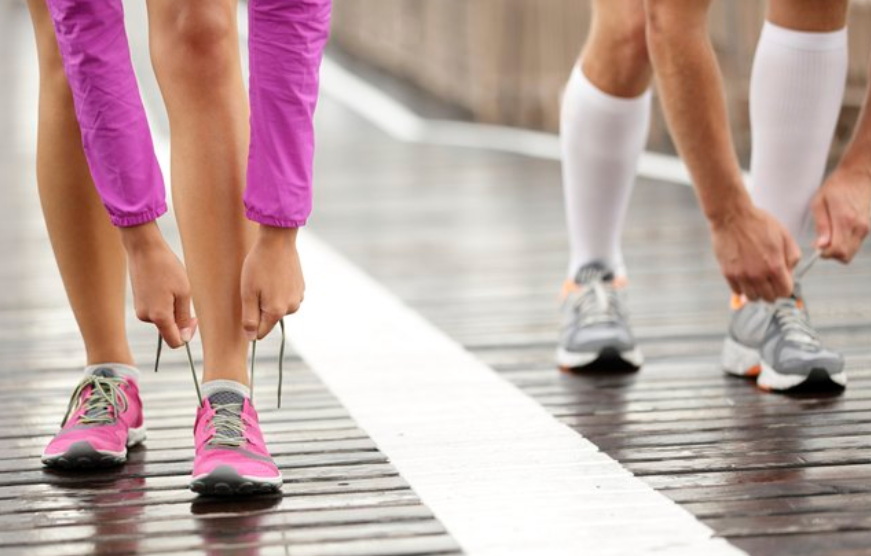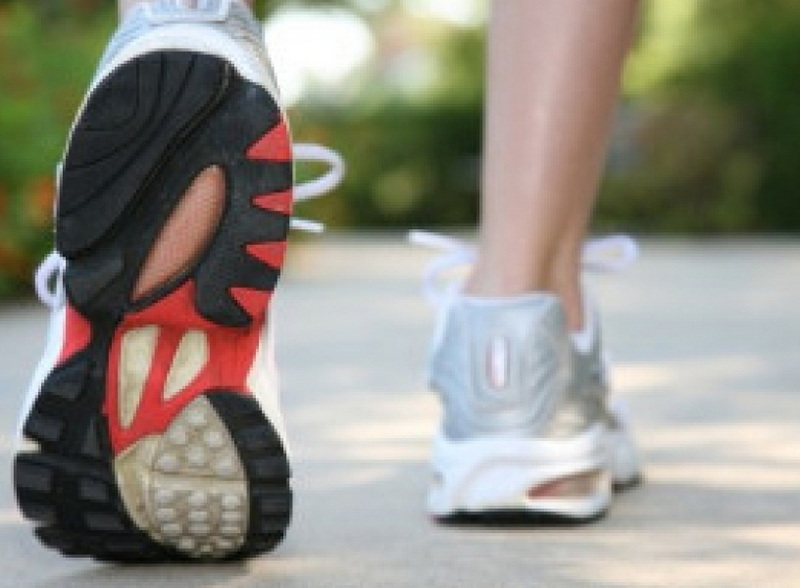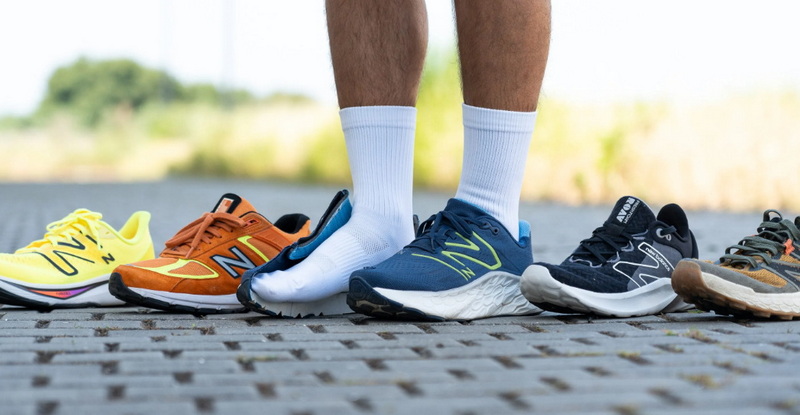Content Menu
● Top Picks for Women's Running Shoes
>> ASICS Novablast 5
>> Nike Pegasus 41
>> Hoka Speedgoat 6
>> Brooks Ghost 16
>> New Balance Fresh Foam X 1080v13
● Factors to Consider When Choosing Running Shoes
● The Importance of Proper Fitting
● Customizing Your Running Shoe Experience
● Caring for Your Running Shoes
● Conclusion
● FAQ
>> 1. How often should I replace my running shoes?
>> 2. Are women's running shoes different from men's?
>> 3. Can I use running shoes for other activities?
>> 4. How do I know if I need stability shoes?
>> 5. Is it worth investing in expensive running shoes?
● Citations:
Running is an excellent form of exercise that offers numerous health benefits, and having the right pair of shoes can make all the difference in your performance and comfort. For women, finding the perfect running shoe is crucial, as it can significantly impact your running experience and help prevent injuries. In this comprehensive guide, we'll explore the best running shoes for women in 2024, discussing their features, benefits, and why they stand out from the competition.

Top Picks for Women's Running Shoes
ASICS Novablast 5
The ASICS Novablast 5 has emerged as a top contender in the women's running shoe market. This versatile shoe offers a perfect balance of comfort, support, and performance, making it suitable for various running styles and distances[1].
Key Features:
- Highly comfortable and supportive
- Lightweight design (9.0 oz / 254g)
- 32.2% more flexible than average
- Soft foam underfoot (38.4% softer than average)
- Massive stack height of 40.9/33.5 mm for excellent impact protection
The Novablast 5's effortless feel and adaptability make it an excellent choice for women on the go. Its combination of lightweight design and abundant cushioning ensures a comfortable ride, whether you're tackling long distances or engaging in daily activities.
Nike Pegasus 41
The Nike Pegasus 41 has established itself as a reliable daily trainer for women. Its versatility and natural running experience make it a popular choice among female runners[1].
Key Features:
- Versatile and natural running experience
- Low 22.2 mm forefoot for stability
- Plush 15.8 HA ReactX foam for comfort
- Two Air Zoom units for enhanced energy return
- 32.9% more flexible than average
- Breathable upper (4/5 rating)
The Pegasus 41's combination of responsiveness and flexibility makes it suitable for various activities, from running to gym workouts. Its all-season upper ensures comfort in different weather conditions, adding to its versatility.
Hoka Speedgoat 6
For trail running enthusiasts, the Hoka Speedgoat 6 has been recognized as the best option for women[2]. This shoe excels in providing the necessary grip and protection for tackling various terrains.
Key Features:
- Vibram Megagrip outsole for excellent traction
- Well-balanced upper (protective yet unrestrictive)
- ZoomX midsole for a gentle and spirited ride
- 4.0 mm deep Traction Lugs for secure footing
- Durable construction
The Speedgoat 6's combination of grip, protection, and comfort makes it an ideal choice for women who enjoy off-road running adventures.
Brooks Ghost 16
The Brooks Ghost 16 has earned its place as a reliable and consistent running shoe for women. Its latest iteration brings improvements while maintaining the qualities that have made it a favorite among female runners[2].
Key Features:
- Lighter than previous versions
- Bouncier midsole for improved energy return
- Reliable and consistent design
- Suitable for various running distances
The Ghost 16's combination of comfort, reliability, and improved performance makes it an excellent choice for women seeking a dependable running shoe.
New Balance Fresh Foam X 1080v13
For women seeking maximum cushioning, the New Balance Fresh Foam X 1080v13 offers a plush and comfortable running experience[2].
Key Features:
- Smooth heel-to-toe transition
- Soft cushioning for impact absorption
- Breathable and flexible upper
While the toebox may feel slightly restrictive for higher-volume feet, the 1080v13's cushioning and smooth ride make it an excellent choice for long-distance runs and recovery days.

Factors to Consider When Choosing Running Shoes
When selecting the best running shoes for women, several factors should be taken into account:
1. Fit: Ensure the shoe provides a snug fit in the heel and midfoot while allowing enough room in the toebox for your toes to spread naturally.
2. Cushioning: Consider your preferences for cushioning level, ranging from minimal to maximum, based on your running style and comfort needs.
3. Stability: Determine if you need neutral shoes or stability shoes based on your foot type and running gait.
4. Terrain: Choose shoes appropriate for the surfaces you'll be running on, whether it's road, trail, or a mix of both.
5. Drop: Pay attention to the heel-to-toe drop, which can affect your running form and comfort.
6. Breathability: Look for shoes with breathable uppers to keep your feet cool and dry during runs.
7. Durability: Consider the shoe's construction and materials to ensure it can withstand your running mileage.
The Importance of Proper Fitting
Regardless of the brand or model, the most crucial aspect of choosing running shoes is ensuring a proper fit. Here are some tips for finding the right fit:
- Visit a specialty running store for professional fitting and advice.
- Try on shoes later in the day when your feet are slightly swollen.
- Wear the socks you typically use for running when trying on shoes.
- Allow about a thumb's width of space between your longest toe and the end of the shoe.
- Test the shoes by running in them, either on a treadmill or around the store.
Customizing Your Running Shoe Experience
Many running shoe brands offer customization options to help you find the perfect fit and style. For example:
- Nike By You: Allows you to customize various aspects of your running shoes, including colors, materials, and even performance features.
- New Balance Custom: Offers personalization options for both aesthetics and fit, including width adjustments.
- Brooks Run Signature: Provides a personalized shoe recommendation based on your unique running style and preferences.
Caring for Your Running Shoes
To maximize the lifespan and performance of your running shoes, follow these care tips:
1. Rotate between multiple pairs of shoes to allow them to dry and recover between runs.
2. Clean your shoes regularly using a soft brush and mild soap.
3. Avoid machine washing or drying, as this can damage the shoe's structure and materials.
4. Replace your running shoes every 400-500 miles or when you notice significant wear and tear.
Conclusion
Finding the best running shoes for women is a personal journey that depends on individual preferences, foot shape, and running style. The ASICS Novablast 5, Nike Pegasus 41, Hoka Speedgoat 6, Brooks Ghost 16, and New Balance Fresh Foam X 1080v13 are all excellent options that cater to different needs and preferences. Remember to prioritize fit, comfort, and functionality over aesthetics when making your choice. By investing time in finding the right pair of running shoes, you'll enhance your running experience and reduce the risk of injuries, allowing you to enjoy the many benefits of this fantastic sport.

FAQ
1. How often should I replace my running shoes?
Most experts recommend replacing running shoes every 400-500 miles or every 4-6 months for regular runners. However, this can vary depending on factors such as your weight, running style, and the surfaces you run on. Pay attention to signs of wear, such as compressed cushioning or worn-out treads, and replace your shoes when you notice a decrease in comfort or support.
2. Are women's running shoes different from men's?
Yes, women's running shoes are typically designed to accommodate the anatomical differences between male and female feet. Women's shoes often have a narrower heel, wider forefoot, and different cushioning patterns to suit the average female foot shape and running gait. However, some runners may find that shoes marketed for the opposite gender fit them better, so it's essential to focus on fit rather than gender labeling.
3. Can I use running shoes for other activities?
While running shoes can be used for various activities, they are specifically designed for the forward motion of running. Using them for other sports or activities may reduce their lifespan and potentially lead to discomfort or injury. For cross-training or other sports, it's best to use shoes designed for those specific activities.
4. How do I know if I need stability shoes?
Stability shoes are designed for runners who overpronate, which means their feet roll inward excessively when running. Signs that you might need stability shoes include wear patterns on the inside edge of your current shoes, knee or hip pain during or after running, or if you have low arches or flat feet. However, it's best to consult with a running specialist or podiatrist for a proper assessment of your running gait and shoe needs.
5. Is it worth investing in expensive running shoes?
While expensive running shoes often incorporate advanced technologies and materials, the most important factor is finding a shoe that fits well and suits your running style. Some runners find that mid-range shoes work perfectly for them, while others benefit from high-end models. It's more important to focus on fit, comfort, and functionality rather than price alone. Remember that investing in quality running shoes can help prevent injuries and enhance your running experience in the long run.
Citations:
[1] https://runrepeat.com/guides/best-womens-running-shoes
[2] https://www.irunfar.com/best-running-shoes-for-women
[3] https://www.outdoorgearlab.com/topics/shoes-and-boots/best-running-shoes-womens
[4] https://www.youtube.com/watch?v=5HRyjylLJt8
[5] https://www.youtube.com/watch?v=t1OvUyZ56Kc
[6] https://www.womensrunning.co.uk/gear/best-womens-running-shoes/
[7] https://theruntesters.com/running-shoes/the-best-running-shoes-to-buy/
[8] https://www.telegraph.co.uk/recommended/leisure/fitness/best-running-shoes-women/
[9] https://www.nytimes.com/wirecutter/reviews/best-running-shoes/

















